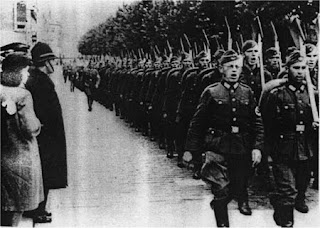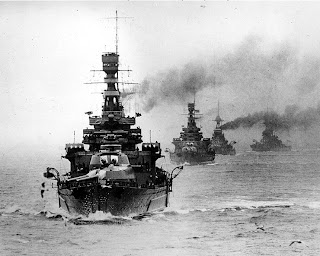The English village, a place that exists more in myth than reality today, where paternalistic squires guide the simple folks in their charming rustic ways, and Mr Darcy baths in the pond once a year. Formerly the home of wise yeomen and stout women, today the village is more likely to be the home of the simple stockbroker and his greedy wife.
Whilst many English villages are no doubt lovely places to live, provided you don't mind driving ten miles just to buy a pint of milk, they mostly have very little to detain the visitor.
This, extremely subjective, list is of places I, someone who can't afford to live properly in the country, like to visit.
10. Lacock, Wiltshire

A village owned by the National Trust has to go into any top ten of English villages, but Lacock is real thing and not just a tourist honeypot. The village is mostly eighteenth century but the church, a pub and the magnificent tithe barn are Medieval. Merrie England at its best, you can even incarcerate yourself in the lock up. It was also apparently the inspiration for Godrics Hollow, the home of James and Lily Potter and the place has appeared so often in BBC Costume Dramas it deserves its own Equity card.
9. Mobberley, Cheshire

Mobberley barely counts as a village, being a small town now or even a suburb of Wilmslow.
In legend it was the home of the farmer who sold his white stallion to a mysterious wizard and this story starts Alan Garner's
The Weirdstone of Brisingamen.
Surprisingly, considering it is set in one of the flattest parts of the country, it was also home to one of our most famous mountaineers, George Mallory, who when he wasn't streaking through Swiss Hotel lobbies or hiking in the nip was a pioneering 'Everester',climbing the mountain "Because it was there". He disappeared 8 June 1924 near the summit and his body was found on 1 May 1999. Whether in between he had been to the top is unknown, although a photo he had planned to leave there was not on him.
My connection with Mobberley was in 1997 when, after three months camped out of the site of the new runway at Manchetser airport I was rudely evicted and so shifted my tent to a paddock in the village. There I discovered the advantages of squatting a posh post code and started to rub shoulders with the rich and famous. I met Terry Waite, was interviewed by Davina McCall, bumped into Neil and Christina Hamilton at a Vicar's tea party and got myself invited to Westminster by Martin Bell.
Rather more interesting though, Mobberley is adjacent to Lindow Moss, the place where nearly 2000 years ago the unfortunate
Pete Marsh (as he's know) died a triple death. The Moss is now just soggy fields, but when the mist comes down (as it likes to do) you can still feel yourself between the worlds. It's a pity about the jumbo jets though.
8. Hurst Green, Lancashire
What can you say about a village that boast the magnificent Jacobean pile of
Stoneyhurst College and Tolkien's favourite pub?
JRR was a frequent visitor to the village and some people have traced the entire geography of the Shire in the local area, from the Brandywine Bridge (pictured) to the Barrow Downs. The village can also claim that the
weather station at the college has been in continuous use for longer than any other, and has been charting our warming climate since 1846.
7. Little Salkeld, Cumbria

Little the place certainly is, but it has two big attractions;
the Long Meg stone circle, and the
Organic Watermill.
The former is one of the biggest and best circles in the country, and also one of the least known.
Wordsworth may have eulogised it, but when it's standing room only at nearby Castlerigg, you can often have the place to yourself.
The Organic Watermill not only produces some of the best organic flour in the country (and definitely the best porridge oats) but also has an excellent cafe. Although it has fairly stiff competition in the form of the nearby
Organic Bakery at Melmerby, it wins by a wafer thin slice of rye bread.
6. Edensor, Derbyshire

Edensor is an estate village of Chatsworth, so this is really a proxy award for the Devonshire's little pad in the country.
However the place has it's own charms, from a magnificent Weeping Willow on the green to a modest teashop. The church has the graves of
Sir Joseph Paxton, the genius behind the Crystal Palace, and Lord Frederick Cavendish who was
assassinated by Irish Nationalist in 1882 (by accident - they were going for the chap he was standing next to).
The most famous current resident is the Dowager Duchess herself, last survivor, and most normal, of Mitford sisters and one of the few people left alive to have taken tea with Hitler. If you walk up the hill towards Bakewell at the right time of the year you get a chance to scrump some of her blackberries.
5. Ribchester, Lancashire
"It is written upon a wall in Rome; Ribchester was as rich as any town in Christendom".
Actually it isn't, but Ribchester is interesting for being a two street village sat on top of one of the most important Roman towns in the north of England. The remains of the Bath House are easily visible next to the river, and
a small museum has some of the items found on the site, including replicas of the magnificent
parade helmet and
cavalryman relief.
Other bits of the old fort are scattered through the village, like the two pillars in front of the White Bull pub (pictured) and once a year the Romans return for the annual festival.
Ribchester also has a double, if rather tenuous on both counts, King Arthur connection.
As principle northern cavalry barracks Ribchester is the most likely base for the Sarmatian Cataphracts sent to Britain in 175AD. The Sarmatians would have brought with them their dragon banners and stories of swords in stones and may for a while have been commanded by one
Lucius Artorius Castus. Then, after the Romans left, Ribchester may have become the southern capital of Rheged, whose leader was
Urien, another Arthur candidate, and chief bard was
Taliesin.
4. Cropredy, Oxfordshire

Cropredy is a pleasant enough place in its own right, with the river Churwell, the bridge that was the scene of a Civil War battle and a brace of decent pubs. However for one long weekend a year it turns into the
Cropredy Festival.
Cropredy Festival is an institution in itself. Originally the annual reunion of the band Fairport Convention whose members have included singer-songwriting legend Richard Thompson and the immortal Sandy Denny, the success of the festival led to the band reforming. The music takes place in the field across which the King's cavalry charged to victory in 1644 and has now been the scene of more released live recordings than the Royal Albert Hall.
The village itself has adopted the festival as its own. Whilst the residents of Pilton man the barricades during Glastonbury, Cropredy village becomes an extension of the festival, a mixture of bazaar, outdoor kitchen, chill out zone and festival fringe. Indeed, before the festival became a four day event I, like many people, used to turn up a day early to spend the Thursday night in either the
Brassnose or the
Red Lion.
With the village full of aging folk fans high on Wadsworth 6X it is perhaps a scene rather more Hoggarth than Constable, but Cropredy has always been the friendly festival and whilst there you are always aware that you are still in a English village, whereas Glastonbury these days reminds me rather more of the Trafford Centre.
3. Asford-in-the-Water

Ashford sneaks in at number three as it's currently our favourite picnic spot. Ashford is practical as well as pretty as I can sit myself down on one of the park benches in Hall Orchard Playing Fields, under a pair of magnificent English elm trees, whilst my boys play football with real goalposts.
A short walk away is also the best shop in Derbyshire;
Ibbotson's, where you can buy the best home made chutney in Derbyshire, cakes and fresh coffee. The village also has one of the most scenic cricket grounds in the country, where my father-in-law played his last match for the illustrious Midland Bank Sheffield Branch team, and is of course home to the annual Derbyshire ritual of well dressings. Nearby are Monsal and Miller's Dales and also
Fin Cop - the sight of one of the Iron Age forts that guarded the valleys that led into the Peak.
The area is a regular drive out for car clubs and it's not unusual to see a dozen or so identical vehicles heading in convoy through the village. Last time I was there it was the turn of the Aston Martin owners. Unfortunately one of the elderly would-be James Bond's missed the right turn in the centre of the village and threw the party into chaos. For the next hour it was like
the last scene in The Pink Panther as Aston Martin's of various vintages arrived from random directions, circled a few times, and then disappeared a different way to search for their mates.
2. Avebury, Wiltshire

I could have done a Top Ten of villages with stone circles attached, but instead I'll limit myself to Avebury, the stone circle with a village attached.If you arrive in mid summer it seems that Avebury is more of a National Trust exhibit than a village, but a village indeed it is. This Lammas the local cricket team could be seen bravely trying to finish their game amidst the throngs of Druids and New Agers, and rumour has it that the place can even be quite quiet in the middle of winter.
It would be nice to say the village and the circle exist in perfect harmony, but that wouldn't be true. In conserving the latter Alexander Keiller not only knocked down a fair proportion of the former, but he also shut off the villagers supply of cheap stone.
Avebury though isn't just a village and a stone circle, it is the center of a
ritual landscape that can only be fully appreciated on foot. When you walk over a rise and suddenly find yourself staring at the might of Silbury Hill, or discover a hawthorn tree bedecked with ribbons, you learn a little of how this spiritual landscape has been lived in for 4000 years.
And then afterwards you can retire to the Red Lion, drinking in which is a necessary, but not sufficient, requirement to call yourself a Druid.
1. Bamburgh, Northumberland

The picture
almost says it all, but when you discover that on the far side of castle is
one of Northumberland's finest beaches you realise why Bamburgh gets my Number One.
The castle has stood there since the time of the
Gododdin. Thomas Malory, the author of
Le Morte d'Arthur, besieged the place and it may have been the inspiration for Lancelot's
Joyous Garde. In Anglo-Saxon times it was the court of one of the most civilised kingdoms in Europe, and it may even have been here that the poem Beowolf was first recited. Just across the water is
Lindisfarne and viewing the holy island from the castle you realise just how daring the Vikings were in 793 to sack the monastery right under the noses of the warriors in the fortress.
Add in the Crastor kippers served up for breakfast in the local B&Bs and you have the perfect destination for a weekend away. Anyone planning a bit of romance though (which doesn't go terribly well with kippers - or so my wife says) may wish to consider
the story of King Oswiu and Queen Eanfled, whose failure to co-ordinate their love-making at the castle led to the demise of the Celtic Church.
 I originally called it Aliens meets Fern Gully, but really it's Apocalypse Now meets Dances With Wolves (or rather A Man Called Horse, the film that kick started the genre).
I originally called it Aliens meets Fern Gully, but really it's Apocalypse Now meets Dances With Wolves (or rather A Man Called Horse, the film that kick started the genre).  The sleep of reason brings forth monsters.
The sleep of reason brings forth monsters.










































